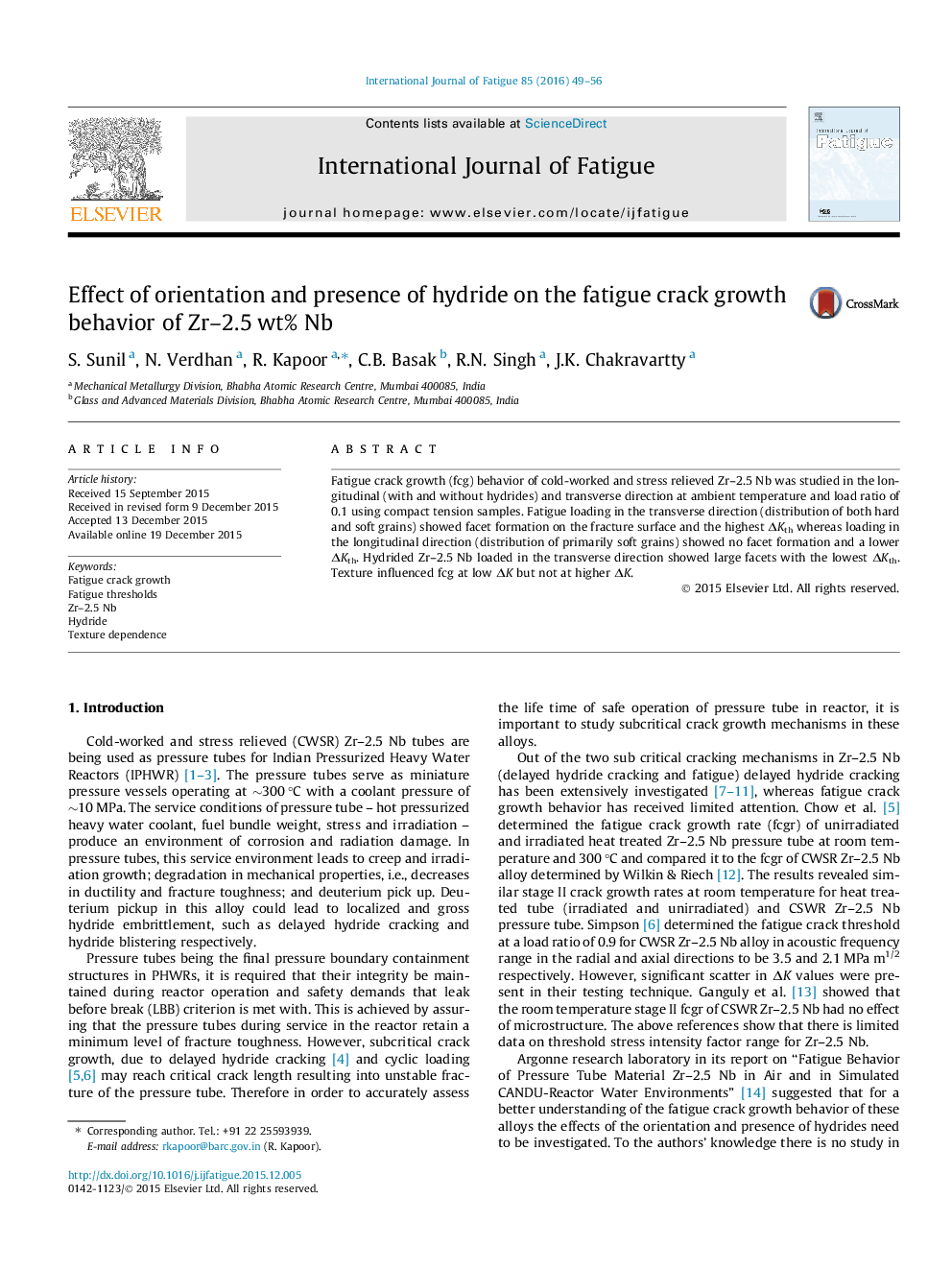| Article ID | Journal | Published Year | Pages | File Type |
|---|---|---|---|---|
| 778159 | International Journal of Fatigue | 2016 | 8 Pages |
•Fatigue crack growth behavior of textured and hydrided Zr–2.5 Nb was investigated.•No influence of microstructure and texture in stage II of fatigue behavior.•ΔKth was found lowest for hydrided Zr–2.5 Nb.•ΔKth was influenced by texture.
Fatigue crack growth (fcg) behavior of cold-worked and stress relieved Zr–2.5 Nb was studied in the longitudinal (with and without hydrides) and transverse direction at ambient temperature and load ratio of 0.1 using compact tension samples. Fatigue loading in the transverse direction (distribution of both hard and soft grains) showed facet formation on the fracture surface and the highest ΔKth whereas loading in the longitudinal direction (distribution of primarily soft grains) showed no facet formation and a lower ΔKth. Hydrided Zr–2.5 Nb loaded in the transverse direction showed large facets with the lowest ΔKth. Texture influenced fcg at low ΔK but not at higher ΔK.
